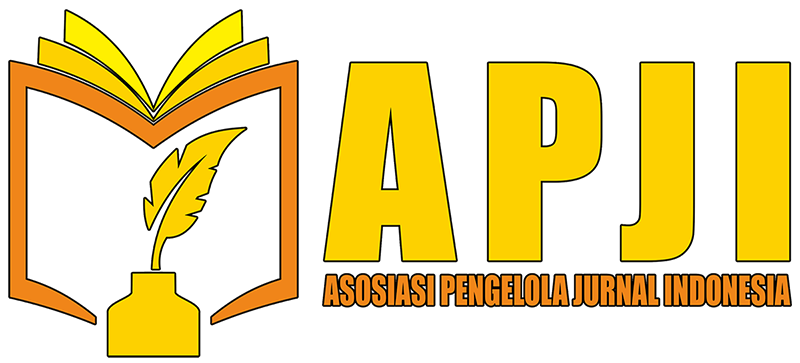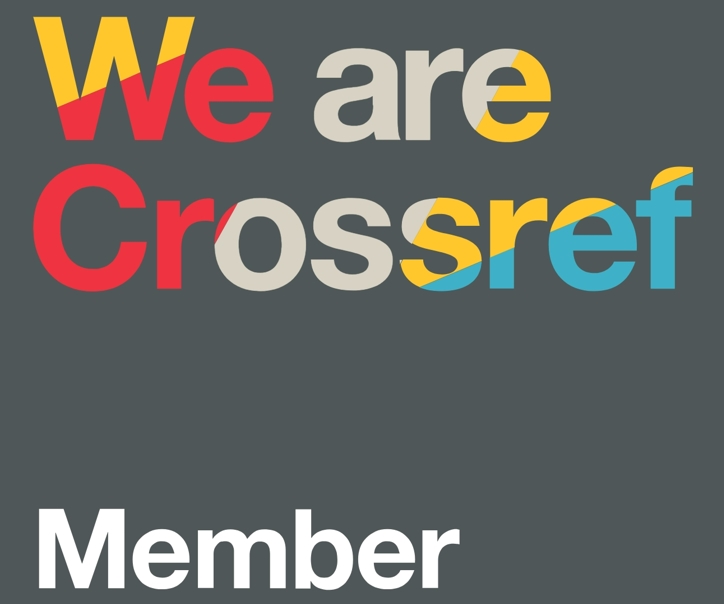The Effect Size of Blended Learning in Mathematics Learning
DOI:
https://doi.org/10.61991/ijeet.v2i1.28Keywords:
Blended learning; Effect Size, MathAbstract
This study aims to determine the effect of blended learning in mathematics learning. This type of research is quantitative research with a meta-analysis approach. The inclusion criteria are research published in 2020-2023, research must be experimental methods or quasi-experiments, research related to the influence of blended learning in mathematics learning, research comes from SINTA indexed journals, Research data is obtained through google scholar, DOAJ, Mendeley and Sinta and research has complete data to calculate the value of effect size. The results of 23 studies concluded that there was a significant influence of blended learning in mathematics learning with an average effect size value of 0.83 with a large effect category. These findings provide more accurate information about the application of blended learning in mathematics learning.
Downloads
References
Ahmad, W. F. W., Shafie, A., &; Janier, J. B. (2008). Students' perceptions towards Blended Learning in teaching and learning Mathematics: Application of integration. 13th Asian Technology Conference in Mathematics 2008, 7.
Ariswan, A., Yogyakarta, U. N., &; Irwanto, I. (2023). The Effect of Interface Instrumentation Experiments-Supported Blended Learning on Students ' Critical Thinking Skills and Academic Achievement The Effect of Interface Instrumentation Experiments-Supported Blended Learning on Students ' Critical Thinking S. IJIM u2012, 17(14), 101–125. https://doi.org/10.3991/ijim.v17i14.38611
Attard, C., &; Holmes, K. (2022). An exploration of teacher and student perceptions of blended learning in four secondary mathematics classrooms. Mathematics Education Research Journal, 34(4), 719–740. https://doi.org/10.1007/s13394-020-00359-2
Bedebayeva, M., Grinshkun, V., Kadirbayeva, R., Zhamalova, K., &; Suleimenova, L. (2022). A blended learning approach for teaching computer science in high schools. Cypriot Journal of Educational Sciences, 17(7), 2235–2246. https://doi.org/10.18844/cjes.v17i7.7693
Cohen, L., Manion, L., Lecturer, P., Morrison, K., &; Lecturer, S. (2007). Research Methods in Education. New York,: Routledge is an imprint of the Taylor &; Francis Group, an informa business.
Dardiri, A., &; Siswoyo, D. (2022). The Effect Of Blended Learning Model With Metacognitive Strategy On Mathematics Ability And Self-Regulated Learning Of Elementary School Students. Journal of Positive School Psychologist, 6(6), 3822–3830.
Diah, H. R., Dayurni, P., Evasufi, L., &; Fajari, W. (2022). Meta-Analysis Study : The Effect of Android-Based Learning Media on Student Learning Outcomes. INTERNATIONAL JOURNAL OF ASIAN EDUCATION, 3(4), 253–263.
Elfira, I., &; Santosa, T. A. (2023). Literature Study : Utilization of the PjBL Model in Science Education to Improve Creativity and Critical Thinking Skills. Journal of Science Education Research, 9(1), 133–143. https://doi.org/10.29303/jppipa.v9i1.2555
Geary, D. C. (2004). Mathematics and Learning Disabilities. Journal of Learning Disabilities, 37(1), 4–15. https://doi.org/10.1177/00222194040370010201
Huu, D., Id, T., Uyen, B. P., &; Ngan, L. K. (2023). The application of blended learning in mathematics teacher education : Protocol for a systematic review. PLOS ONE 1, 18(9), 1–9. https://doi.org/10.1371/journal.pone.0292244
Indrapangastuti, D., Surjono, H. D., Sugiman, &; Yanto, B. E. (2021). Effectiveness of the Blended Learning Model to Improve Students Achievement of Mathematical Concepts. Journal of Education and E-Learning Research, 8(4), 423–430. https://doi.org/10.20448/journal.509.2021.84.423.430
Juandi, D., Kusumah, Y. S., Tamur, M., Perbowo, K. S., &; Tanu, T. (2021). Heliyon A meta-analysis of Geogebra software decade of assisted mathematics learning : what to learn and where to go ? Heliyon, 7(October 2020), e06953. https://doi.org/10.1016/j.heliyon.2021.e06953
Kadirbayeva, R., Pardala, A., Alimkulova, B., Adylbekova, E., Zhetpisbayeva, G., &; Jamankarayeva, M. (2022). Cypriot Journal of Educational Methodology of application of blended learning technology in mathematics education. 17(4), 1117–1129.
Katasila, P., &; Poonpon, K. (2022). The Effects of Blended Learning Instruction on Vocabulary Knowledge of Thai Primary School Students. English Language Teaching, 15(5), 52. https://doi.org/10.5539/elt.v15n5p52
Kurniawati, A. (2021). Teachers' Reflections on Teaching Mathematics in English : A Consideration for Developing ESP Course. 1(November), 72–87.
Lazic, B. D. (2021). The influence of project-based learning on student achievement in elementary mathematics education. South African Journal of Education, 41(3), 1–10.
Mursid, R., Saragih, A. H., &; Hartono, R. (2022). The Effect of the Blended Project-based Learning Model and Creative Thinking Ability on Engineering Students' Learning Outcomes. International Journal of Education in Mathematics, Science and Technology, 10(1), 218–235. https://doi.org/10.46328/ijemst.2244
Mutya, R. C., &; Masuhay, A. R. L. (2023). the Extent of Implementation of Blended Learning in Senior High School Science Education Vis-a-Vis Students' Academic Achievement. Turkish Online Journal of Distance Education, 24(2), 47–63. https://doi.org/10.17718/tojde.1107412
Novarianing Asri, D., Setyosari, P., Hitipeuw, I., &; Chusniyah, T. (2017). The Influence of Project-based Learning Strategy and Self-regulated Learning on Academic Procrastination of Junior High School Students' Mathematics Learning. American Journal of Educational Research, 5(1), 88–96. https://doi.org/10.12691/education-5-1-14
Nurtamam, M. E., Santosa, T. A., Aprilisia, S., Rahman, A., &; Suharyat, Y. (2023). Meta-analysis : The Effectiveness of Iot-Based Flipped Learning to Improve Students' Problem Solving Abilities. Edumaspul :Journal of Education, 7(1), 1491–1501.
Oktarina, K., Santosa, T. A., Razak, A., &; Ahda, Y. (2021). Meta-Analysis : The Effectiveness of Using Blended Learning on Multiple Intelligences and Student Character Education during the Covid-19 Period. IJECA International Journal of Education &; Curriculum Application, 4(3), 184–192.
Prasetya, A. T., Haryani, S., Andriyani, R., &; Shimizu, K. (2020). Project-based learning in mathematics : A literature review Project-based learning in mathematics : A literature review. Journal of Physics: Conference Series, (1–8). https://doi.org/10.1088/1742-6596/1657/1/012032
Rahman, A. A., Santosa, T. A., Nurtamam, M. E., &; Widoyo, H. (2023). Meta-Analysis : The Effect of Ethnoscience-Based Project Based Learning Model on Students' Critical Thinking Skills. Journal of Science Education Research, 9(9), 611–620. https://doi.org/10.29303/jppipa.v9i9.4871
Rahman, A., Santosa, T. A., Suharyat, Y., &; Aprilisia, S. (2023). The Effectiveness of AI Based Blended Learning on Student Scientific Literacy : LITERACY : International Scientific Journals Of Social, Education and Humanities, 2(1), 141–150.
Rattanatumma, T., &; Puncreobutr, V. (2016). Assessing the effectiveness of stad model and problem based learning in mathematics learning achievement and problem solving ability. Journal of Education and Practice, 7(12), 194–199.
Razak, A., Santosa, T. A., Lufri, &; Zulyusri. (2021). Meta-Analysis: The Effect of HOTS (Higher Order Thinking Skill) on Science Literacy Ability and Student Lesson Study on Ecological and Environmental Materials during the Covid-19 Pandemic. Bioedusiana: Journal of Biology Education, 6(1), 79–87.
Sari, E. F., Nugraheni, N., &; Kiptiyah, S. M. (2019). The Implementation of Blended Learning Based Realistic Mathematics Education in Mathematics Teaching. 5(5), 353–361.
Setiawan et al. (2022). Blended Learning and Student Mathematics Ability in Indonesia : A Meta- Analysis Study. International Journal of Instruction, 15(2), 905–916.
Sofianora, A., Suharyat, Y., &; Santosa, T. A. (2023). THE INFLUENCE OF MATHEMATICS TEACHER PROFESSIONALISM IN IMPROVING STUDENT COMPETENCE IN THE INDUSTRIAL REVOLUTION ERA 5 . 0 IN INDONESIA: A META-ANALYSIS. 10(2).
Solehuddin, M., Rahman, A., Santosa, T. A., & ... (2023). The Effect Of Stem-Based E-Learning On Students' Higher Order Thinking Skills In Indonesia: A Meta-Analysis. ... of Education and .... Retrieved from https://ijel.amikveteran.ac.id/index.php/ijel/article/view/72
Springer, L., Stanne, M. E., &; Donovan, S. S. (1999). Effects of small-group learning on undergraduates in science, mathematics, engineering, and technology: A meta-analysis. Review of Educational Research, 69(1), 21–51. https://doi.org/10.3102/00346543069001021
Suana, W., Istiana, P., &; Maharta, N. (2019). The effect of the application of blended learning on static electricity material on students' critical thinking skills. Journal of Science Education (Jps), 7(2), 129. https://doi.org/10.26714/jps.7.2.2019.129-136
Suryono, W., Haryanto, B. B., Santosa, T. A., Suharyat, Y., &; Sappaile, B. I. (2023). The Effect of The Blended Learning Model on Student Critical Thinking Skill : Meta-analysis. Edumaspul - Journal of Education, 7(1), 1386–1397.
Tabieh, A. A. S., & Hamzeh, M. (2022). the Impact of Blended-Flipped Learning on Mathematical Creative Thinking Skills. Journal of Educators Online, 19(3). https://doi.org/10.9743/JEO.2022.19.3.15
Tseng, W.-S., Junior, J.-D., School, H., Kano, T. T., &; Hsu, C.-H. (2014). Effect of Integrating Blended Teaching into Mathematics Learning for Junior High School Students. Journal of Computers and Applied Science Education, 1(2), 39–57.
Yaghmour, K. S. (2016). Effectiveness of Blended Teaching Strategy on the Achievement of Third Grade Students in Mathematics. 7(5), 65–73.
Yulia Prawestri, P., Gusti Putu Sudiarta, I., &; Wayan Puja Astawa, I. (2020). The Effect of Online Discussion in Blended Learning on Students' Mathematical Concept Comprehension and Attitude. Journal of Physics: Conference Series, 1503(1). https://doi.org/10.1088/1742-6596/1503/1/012017
Zulyusri1*, Tomi Apra Santosa1, 2, Festiyed1, Yerimadesi1, Yohandri1, Abdul Razak1, S. (2023). Effectiveness of STEM Learning Based on Design Thiking in Improving Critical Thinking Skills in Science Learning : A. Journal of Science Education Research, 9(6), 112–119. https://doi.org/10.29303/jppipa.v9i6.3709
Downloads
Published
How to Cite
Issue
Section
License
Copyright (c) 2024 Mohammad Edy Nurtamam, Baso Intang Sappaile, Sutarto, Novianty Djafri, Tomi Apra Santosa, andri kurniawan

This work is licensed under a Creative Commons Attribution-ShareAlike 4.0 International License.













